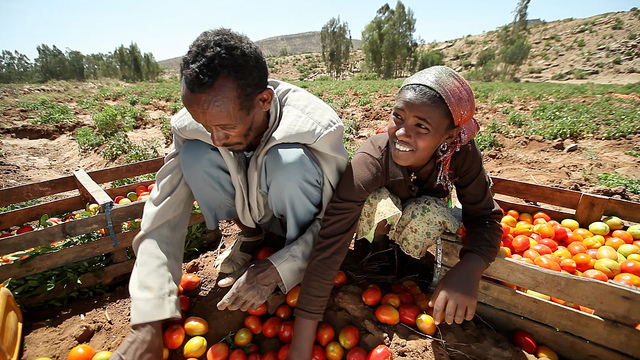PIM's blog on collecting sex-disaggregated data
Two gender researchers from CGIAR Research Program on Policies, Institutions, and Markets (PIM), Cheryl Doss, an economist at Yale University, and Caitlin Kieran, Senior Research Assistant on gender for PIM at the International Food Policy Research Institute (IFPRI), explain what they hope to accomplish by creating this blog.
Stronger evidence for better decisions
We hear a lot about the role of gender in agriculture, food security, and international development. And we applaud the development community’s increased focus on reducing gender inequalities. One challenge that we are all facing is that the evidence is still weak in a number of areas. Many of the statements and statistics regarding gender disparities in agriculture and food security are not substantiated by data (see examples here).
This is problematic for a number of reasons. Concrete evidence is needed to formulate policy recommendations and monitor policy responses to the inequalities faced by women and men. Unsubstantiated statistics discourage further research and data collection that are specifically aimed at providing evidence on these issues. Many donors now require researchers to collect sex-disaggregated data on a wider range of issues, which is a step in the right direction. But there is no consensus on the best practices for much of this data collection. Time and resources are wasted when the data collected cannot answer the key research and policy questions.
It is critical to identify the main research questions, then to collect and analyze the relevant sex-disaggregated data. We need to start with descriptive information. Who makes the decisions and who is involved in various activities? Who owns and controls the resources? What decisions are they making and in what activities are they participating? What policies and institutions shape the environment in which farmers, consumers, or workers within value chains make decisions? This will allow us to identify potential gender inequalities in decisionmaking, ownership, and control over assets, access to services, productivity, time allocation, food security, nutrition, remuneration, and representation within different occupations and governing bodies, among other topics.
We can then explore the causes and impacts of these gender gaps and identify methods to address them. What are the constraints facing men and women in agriculture? What projects, programs, and policies can remove these barriers and promote opportunities?
To answer these questions, we need to gather information both from and about men and women. People often ask us for advice on collecting and analyzing sex-disaggregated data, particularly through household surveys (see here for an explanation of what we mean by sex-disaggregate data). Who should they interview? What questions should they ask and what response options should they provide? How should they analyze conflicting data from spouses? We can usually provide suggestions based on our past experience and knowledge of what works. But we also come across many questions for which we can’t identify the best approach because it has not been tested.
Together we know more
The goal of this blog is to develop a community of practice around the collection of sex-disaggregated data for gender analysis in agriculture. This will allow us to learn from one another’s successes and mistakes. Many of the lessons that we learn in the process of fielding surveys and qualitative approaches and then analyzing sex-disaggregated data do not make it into published journal articles. By sharing lessons learned about which questions are important in specific contexts, how to frame questions, who to interview, and similar issues, we can collectively improve and simplify our methods of collecting sex-disaggregated data.
We hope that EnGendering Data will serve as a forum for researchers, policymakers, and development practitioners to pose questions, engage in discussions, and share resources about promising practices in collecting and analyzing sex-disaggregated data on agriculture and food security.
We welcome your comments on the entries that are posted – and we invite you to suggest topics for other blog posts, with suggestions of who might write them (including yourself).
Have ideas for improving this blog? Share your views in comments below or contact us at CRP-PIM[at]cgiar.org
Read EnGendering Data>>
This post is part of EnGendering Data, a blog on collecting and analyzing sex-disaggregated data to improve the knowledge base on the role of gender in agriculture and food security, maintained by the CGIAR Research Program on Policies, Institutions, and Markets (PIM).
Top photo: Yousuf Tushar




